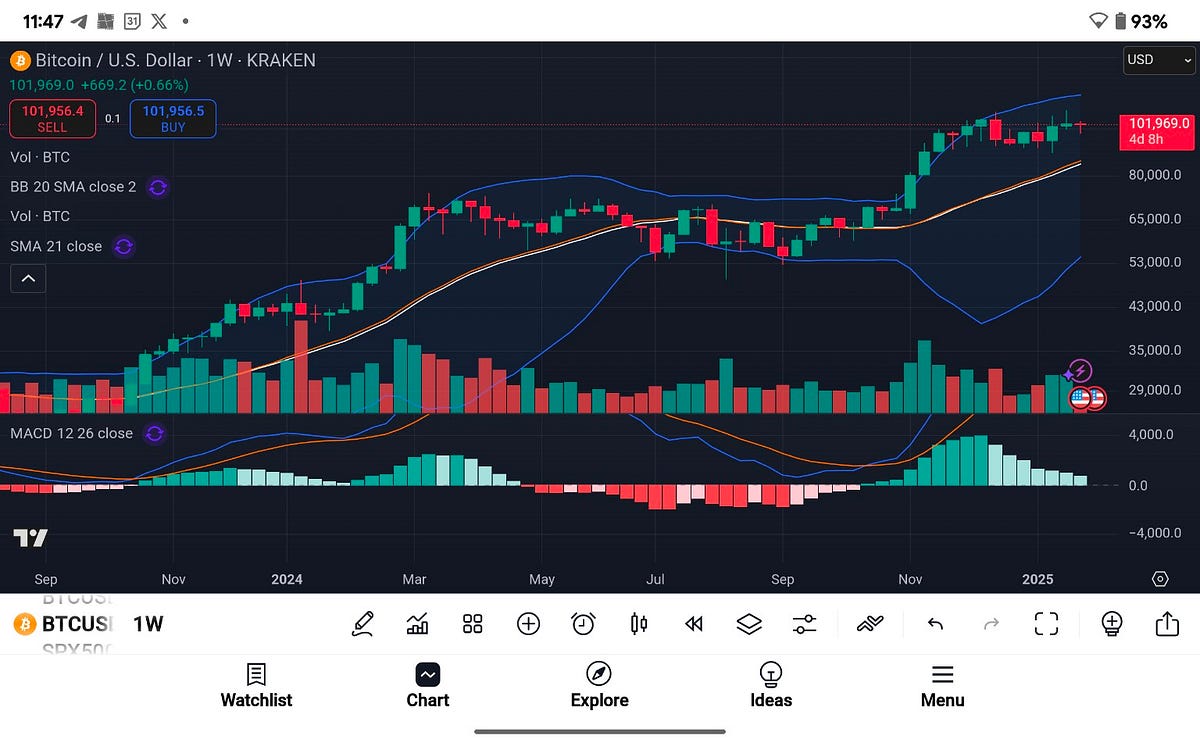From underground trains to highways and fortresses, Bitcoin’s scalability was always envisioned to be solved in layers.

Imagine you need to send a physical package across the world. If it’s a simple item, you might drop it off at your local post office, where it will be driven to an airport, flown overseas, and delivered by another postal service. But what if the package contains something extremely valuable — like a diamond watch or a nuclear football? In that case, you’d likely choose a specialised courier service, ensuring it’s securely handled and delivered directly to its destination. The key point is that while the transportation methods may change, the package itself remains the same.
Sending a 'Bitcoin package,' representing the transfer of value, works the same way. The method of transportation may vary depending on your needs, but the package itself remains unchanged. Bitcoin’s base layer, the blockchain, is like an underground train system — extremely secure but slow and costly — while the Lightning Network operates as a global highway for fast, inexpensive transactions, and the Fedimint protocol serves as a community fortress, providing privacy and shared security for specific use cases.
These layers together create a dynamic and expanding ecosystem of open-source solutions, balancing security, speed, and practicality while ensuring the integrity of the Bitcoin ledger. This article explores how these layered solutions work to meet a wide range of needs — from securing life savings to buying a cup of coffee.
Bitcoin Blockchain: Decentralised & Secure (Layer 1)
 The Bitcoin blockchain (Layer 1) is the most secure way of transporting Bitcoin—but also the slowest.
The Bitcoin blockchain (Layer 1) is the most secure way of transporting Bitcoin—but also the slowest.At its core, Bitcoin’s blockchain (layer 1) is the most secure and decentralised layer. It acts like an underground train system, transporting packages (transactions) with unmatched reliability. Every transaction is verified by a global network of nodes, and the decentralised consensus ensures that no single entity can tamper with the records.
However, this security comes at a cost. Transactions on the blockchain are slow, taking no less than 10 minutes to confirm. Additionally, during high demand, fees can soar as users compete to have their transactions included in the next block. While the blockchain is ideal for large transactions, it’s impractical for everyday payments like buying a coffee. This is where the next layer comes in.
Pros: The most secure and decentralised way to transfer Bitcoin.
Cons: Slow (10+ minutes per block confirmation) and costly, making it impractical for everyday use. Limited privacy.
Lightning Network: Scaling Transaction Volumes (Layer 2)
 Lightning (Layer 2) functions like a global highway-system for sending Bitcoin.
Lightning (Layer 2) functions like a global highway-system for sending Bitcoin.The Lightning Network is Bitcoin’s second layer, designed to handle everyday transactions efficiently. Imagine it as a global highway system connecting cities around the world, enabling fast and low-cost transportation of Bitcoin packages. Lightning creates payment channels between participants, allowing transactions to occur instantly without being recorded on the blockchain for every transfer.
This system dramatically scales transaction volumes, making it perfect for small, frequent payments. Instead of clogging up the blockchain with every single payment, transactions are bundled and settled only when channels are closed, reducing fees and increasing speed.
However, using the Lightning Network often involves third-party custodians — service providers who manage nodes (akin to postal offices). Although these custodians cannot directly access your funds, they may track your transactions or, in rare cases, introduce friction, such as payment delays. For most users, this trade-off is justified by convenience, with the risks mitigated by the open nature of node operations, as anyone can create and operate a node, ensuring a decentralised network. Nevertheless, this setup still leaves room for improvement in privacy and autonomy — precisely where Fedimint steps in.
Pros: Fast and cheap, making Bitcoin more practical for daily use.
Cons: Relying on a third-party node (similar to a postal office) introduces some risks. While they can’t access your funds, they might track or delay transactions. Running your own node eliminates this risk but requires technical expertise and effort, which may not be practical for everyone.
Fedimint: Scaling Custody (Layer 2)
 Fediment is like a fortress, protecting its members from the outside world.
Fediment is like a fortress, protecting its members from the outside world.While the Lightning Network scales transaction volumes, Fedimint scales custody. As an open protocol extending Bitcoin’s Layer 2, Fedimint acts like a fortress, introducing a unique approach to custody by enabling communities to share it collectively among trusted members.
Here’s how it works: when you deposit Bitcoin into a Fedimint “Federation” — which can be created by any community — it is converted into “ecash tokens.” These tokens represent the same amount of Bitcoin but are completely private and can be used within the fortress (aka Federation) for transactions — even in offline scenarios. Because these transactions don’t touch the blockchain or Lightning Network directly, they remain untraceable for outsiders. If you need to send Bitcoin outside the fortress, the tokens are seamlessly converted back into Bitcoin and sent using Lightning or the blockchain.
 Fedi App is an app utilising the Fedimint protocol. Inside the app, users can create their own “Federations.”
Fedi App is an app utilising the Fedimint protocol. Inside the app, users can create their own “Federations.”Fedimint is valuable in situations where privacy is essential and where trust can be placed in a community of “Guardians” who collaboratively manage a Federation. Guardians are chosen by the community and share custody responsibilities, ensuring no single individual has control. These Guardians can operate outside the physical region of a community, mitigating the risks associated with local oversight or interference. This makes Fedimint especially beneficial for communities in regions with oppressive regimes or limited access to traditional financial services.
Pros: High privacy, offline capability, and strong community trust. Complements Lightning by using its network for external transactions.
Cons: Requires trust in the Guardians managing the fortress. However, the federated model reduces the risk of a single point of failure.
Why Is Custody So Important?
Custody is a cornerstone of Bitcoin’s integrity and resilience. Historically, custodians — whether banks, governments, or other centralised institutions — have been the weak points in monetary systems. Even with gold, reliance on custodians led to overissuing claims far beyond actual reserves, ultimately undermining the system.
Bitcoin’s base layer design addresses this flaw by enabling non-custodial ownership. However, as Bitcoin scales, most transactions will occur on layers above the base layer, making it critical to maintain decentralisation in custody solutions. If custody on these layers trends toward centralisation — where institutions control the bulk of transactions — it risks replicating past systemic issues. Centralised custodians could undermine Bitcoin’s scarcity by issuing claims exceeding actual holdings, compromising trust and the protocol’s value.
Decentralised custody solutions are crucial for ensuring Bitcoin retains its core strengths. Hardware wallets, multi-signature setups, and protocols like Fedimint provide users with tools to maintain control over their Bitcoin. Even in cases where intermediaries are involved, these approaches are designed to incentivise decentralisation rather than centralisation, ensuring that Bitcoin evolves without compromising its foundational principles.
Bitcoin’s layered approach to scaling isn’t an afterthought — it’s a core part of Satoshi Nakamoto’s vision. The base layer provides an unshakable foundation of decentralisation and security, while layers like Lightning and protocols like Fedimint build on it, addressing scalability and privacy in innovative ways. This layered scaling allows Bitcoin to meet diverse needs, from securing life savings to buying an ice cream cone. It ensures Bitcoin remains flexible and adaptable, evolving through creativity and collaboration while staying true to its decentralised principles.
Trending Toward Decentralisation vs. Centralisation
Satoshi Nakamoto’s design choices for Bitcoin were not arbitrary; they were rooted in foresight and a deep understanding of the trade-offs required to maintain decentralisation. A prime example of this is the decision to set the block size limit on Bitcoin’s base layer (Layer 1) to 1MB. At first glance, this may seem like an odd or restrictive choice, especially since increasing the block size would directly address scalability challenges on Layer 1 by accommodating more transactions per block. However, Satoshi had the exceptional foresight to understand that this short-term solution would have long-term consequences, potentially jeopardising Bitcoin’s decentralisation in the future.
Here’s how: As Bitcoin adoption grows exponentially, so would transaction volumes. If the block size were unlimited or significantly larger, the blockchain’s size would grow exponentially as well, requiring ever-increasing computational resources to store and validate it. Over time, this would make it prohibitively expensive for individuals to run their own nodes, leaving only large entities with the financial resources to do so. This centralisation of validation power would grant these entities undue influence, compromising the trustless and decentralised nature of Bitcoin.
By capping the block size at 1MB, Satoshi ensured that the blockchain’s growth would remain linear, even if adoption grew exponentially. This design decision worked in tandem with Moore’s Law, which predicts exponential improvements in computational power and storage efficiency over time. As a result, running a full node and maintaining a copy of the blockchain becomes progressively cheaper, encouraging more participants to validate transactions independently. This creates a natural trend toward decentralisation as Bitcoin adoption scales.
In a similar vein, open protocols like Lightning and Fedimint aim to develop solutions that inherently incentivise decentralisation rather than centralisation, safeguarding the integrity of the Bitcoin protocol much like the block size limit on Layer 1. By adhering to the principles of open protocols for scaling, these solutions foster a diverse ecosystem of innovations and use cases, continuously scrutinised and refined by a broader community. This diversity strengthens decentralisation by minimising the risk of any single centralised entity becoming a gatekeeper or exerting undue influence over the network. Ultimately, this approach is highly sustainable, as it aligns with the best interests of everyone involved — which is to ensure that the integrity of Bitcoin remains intact.
Bitcoin’s Transportation System: How Lightning & Fedimint Solve Scalability was originally published in The Capital on Medium, where people are continuing the conversation by highlighting and responding to this story.

 2 months ago
27
2 months ago
27









 English (US) ·
English (US) ·